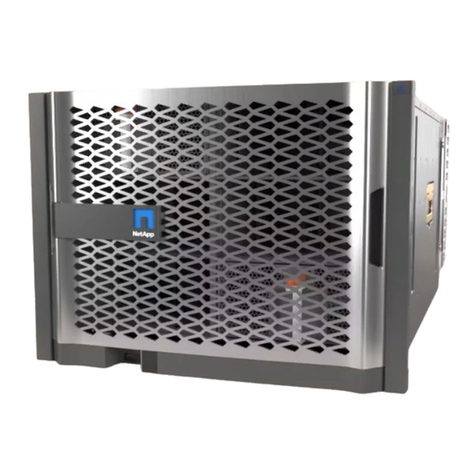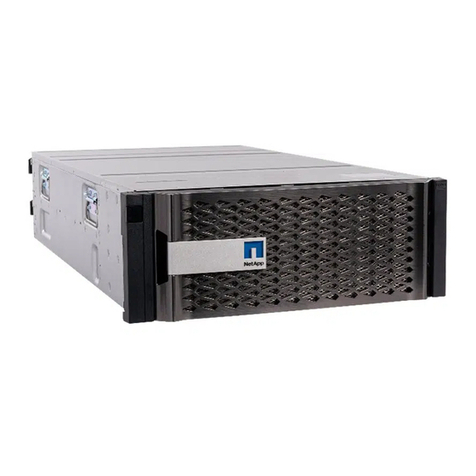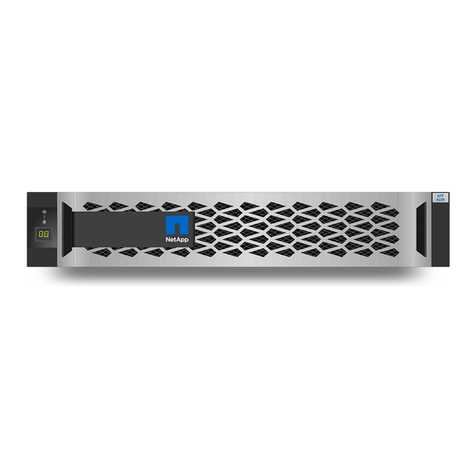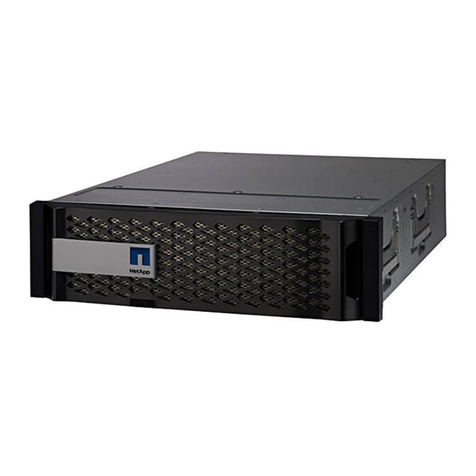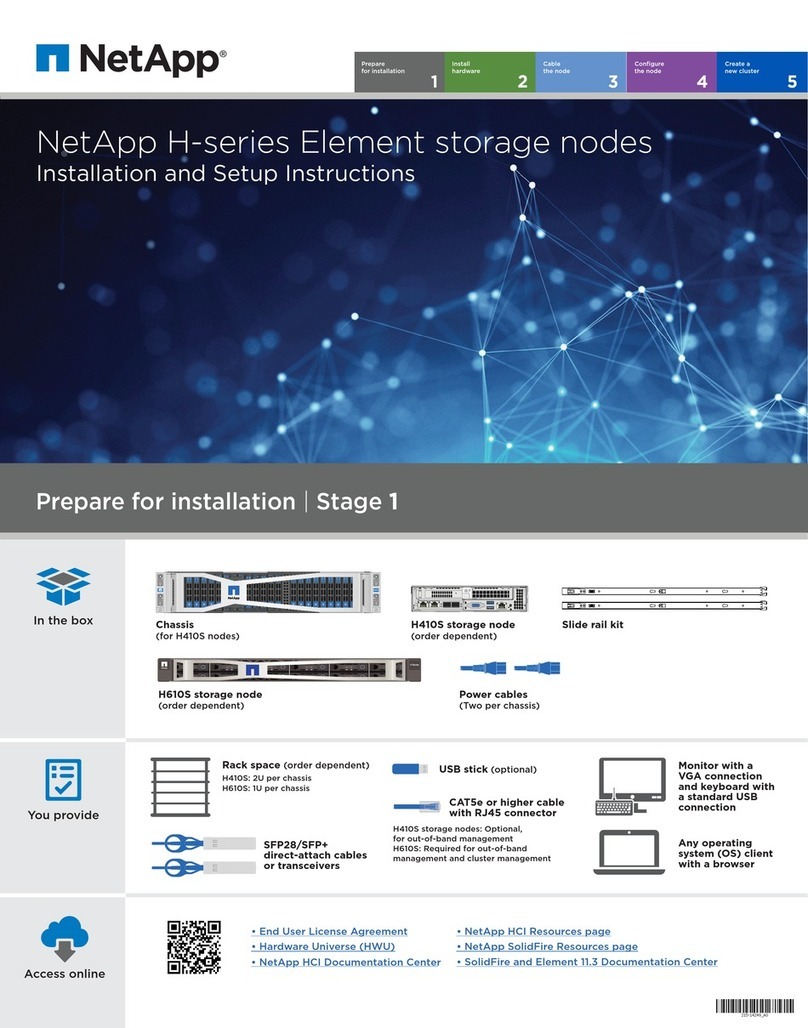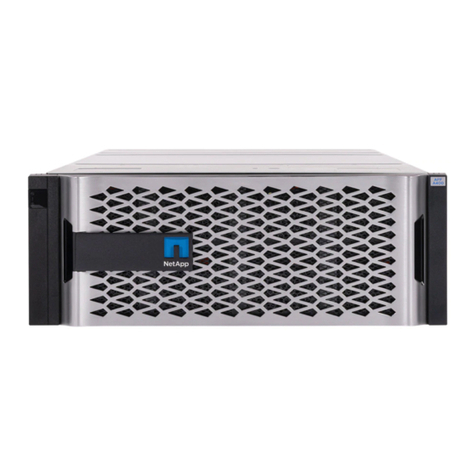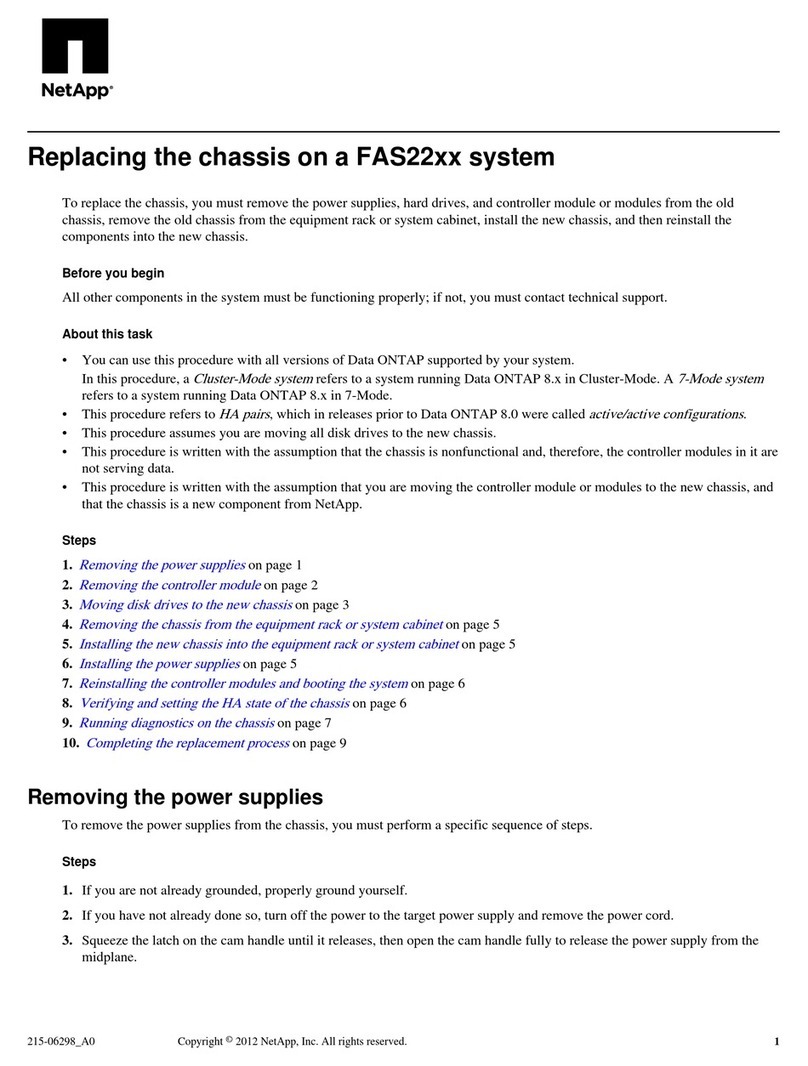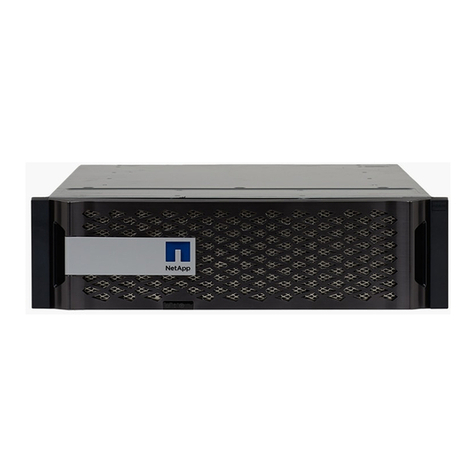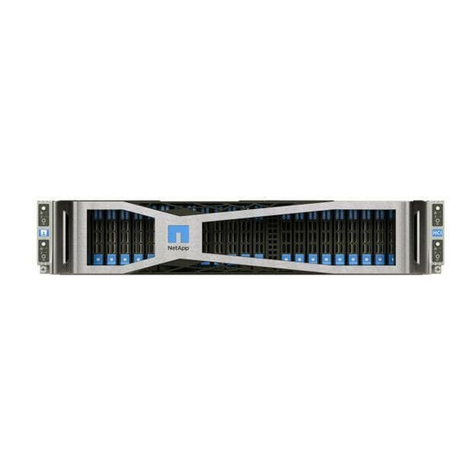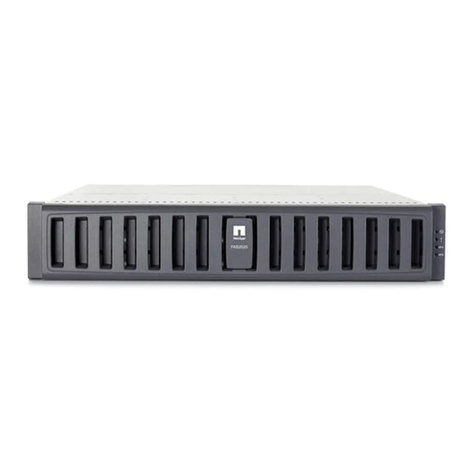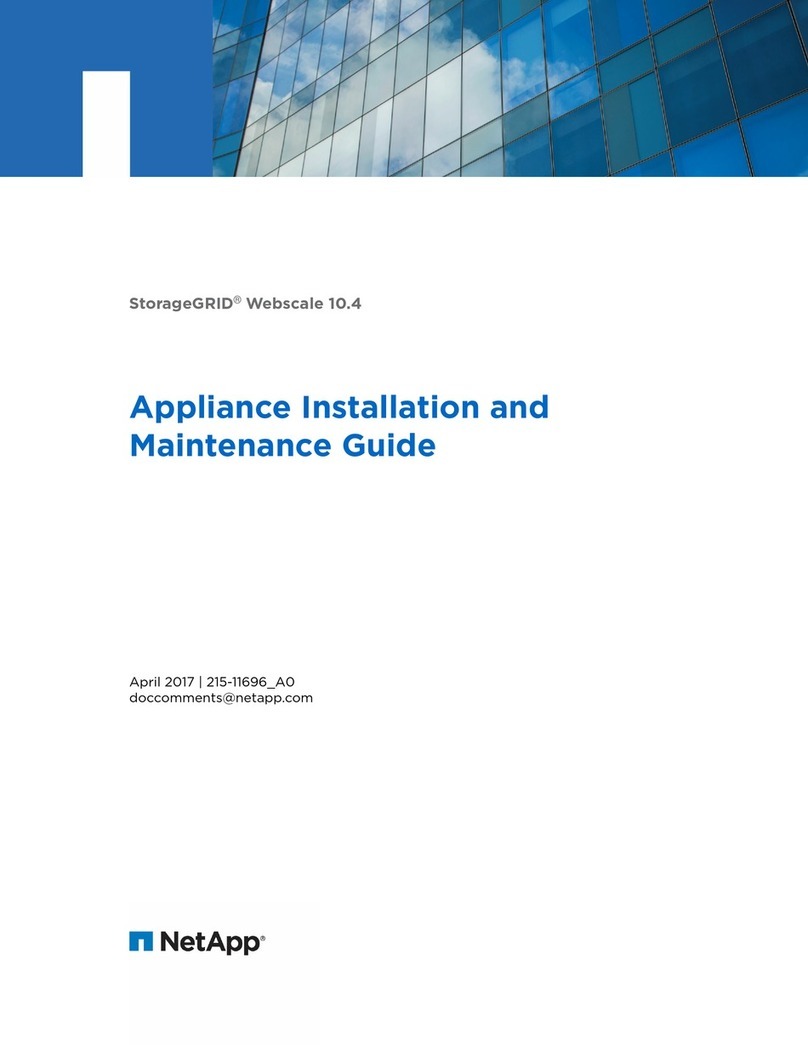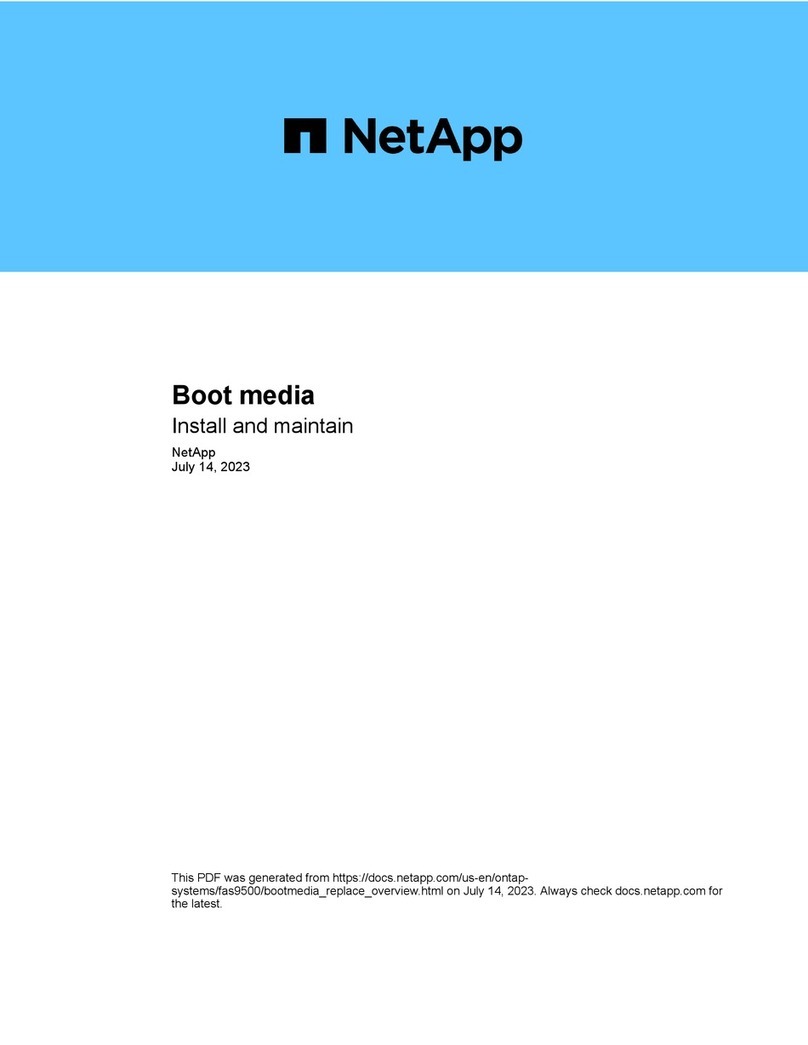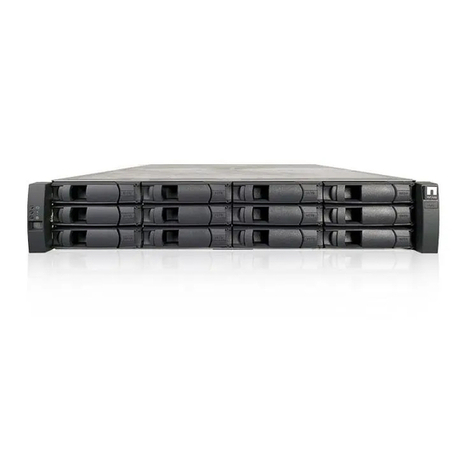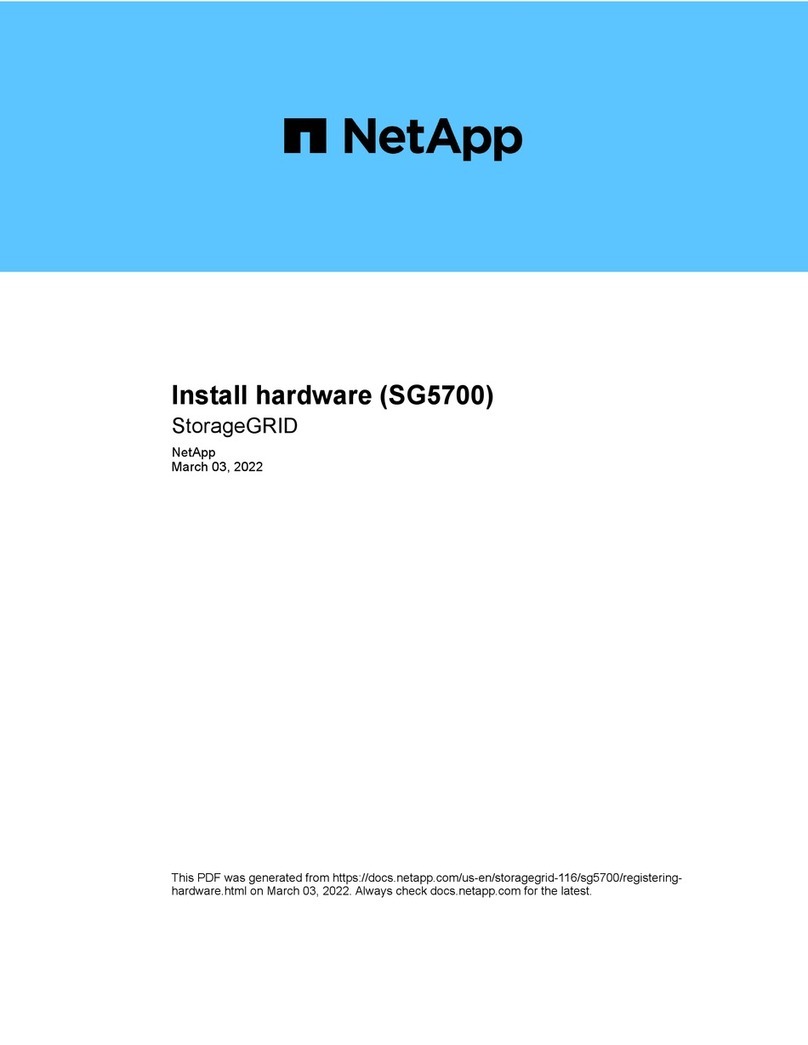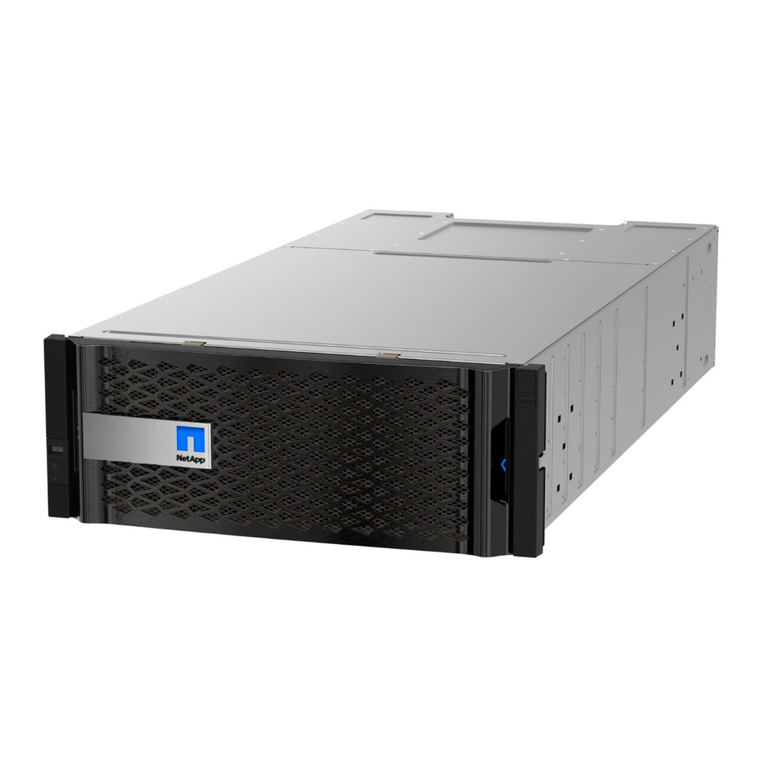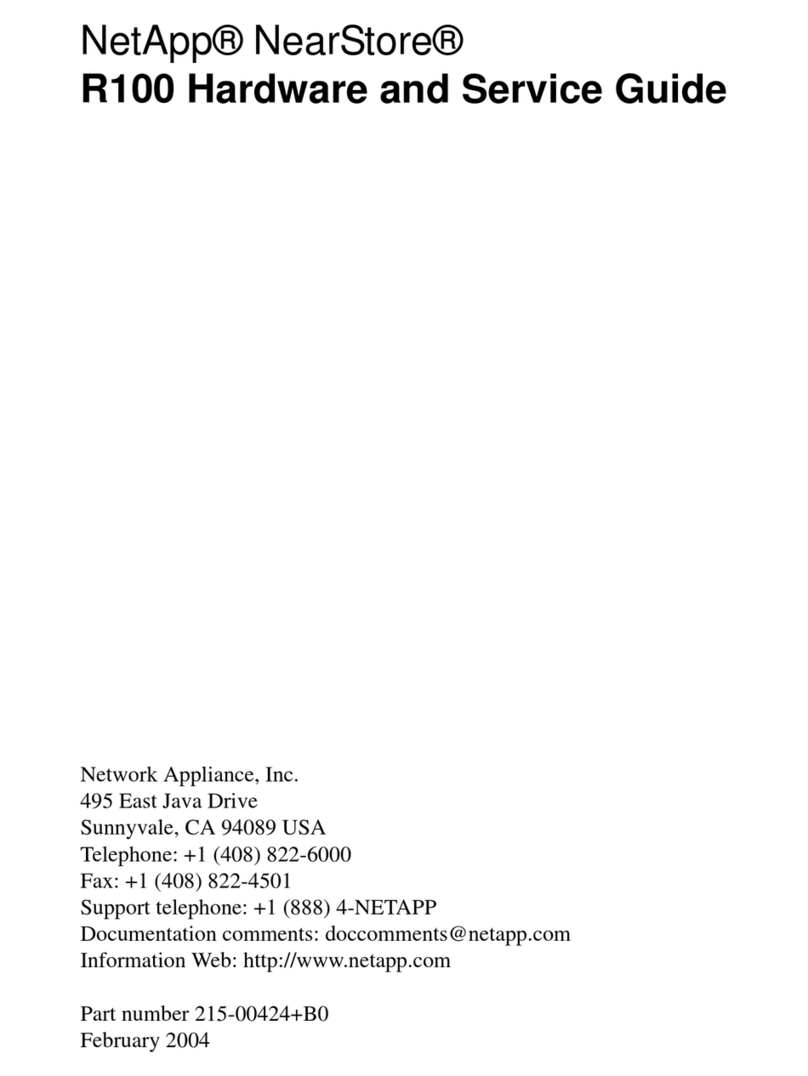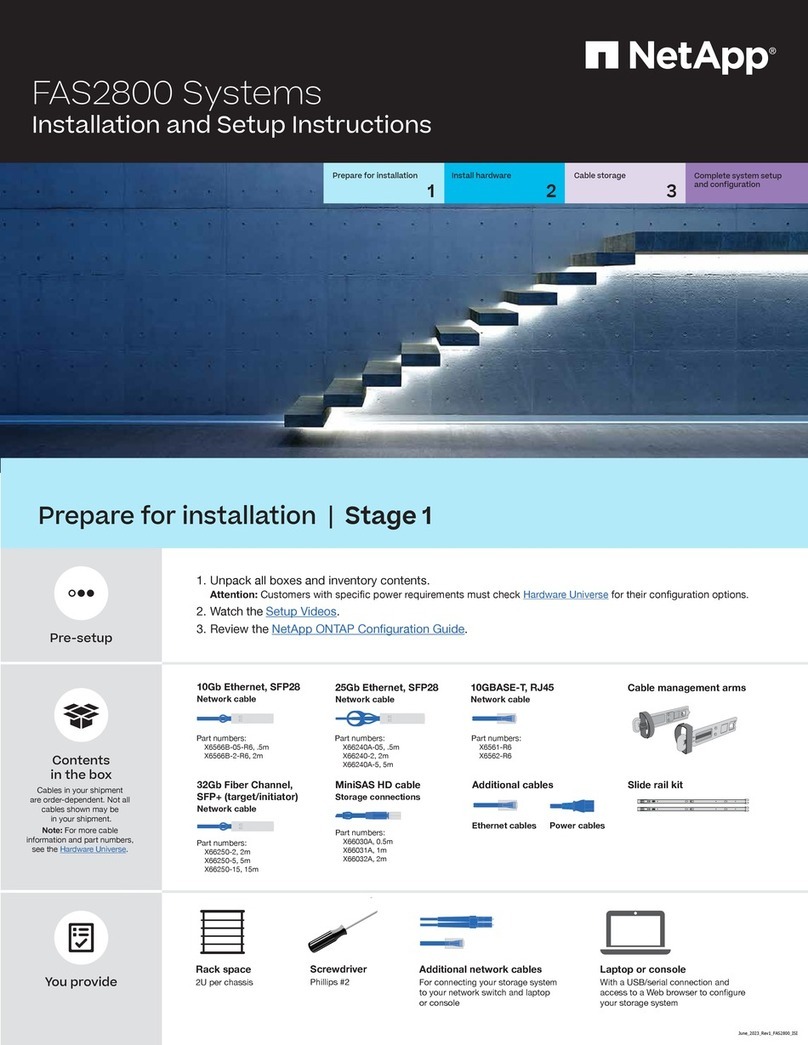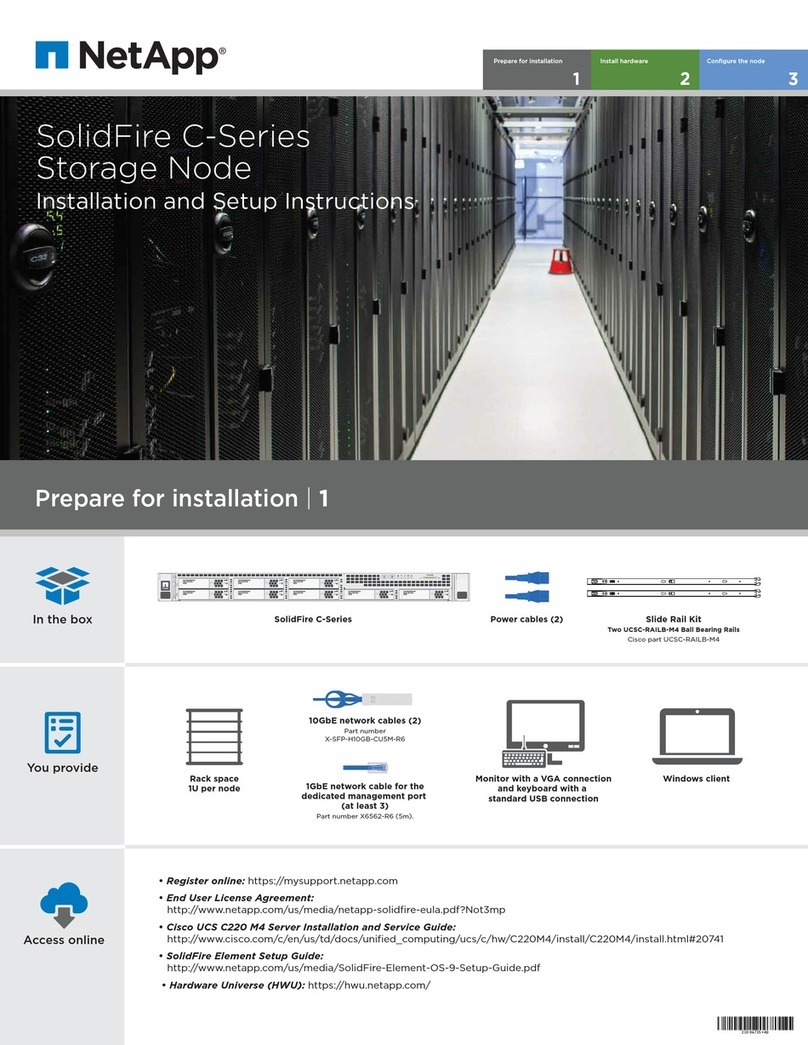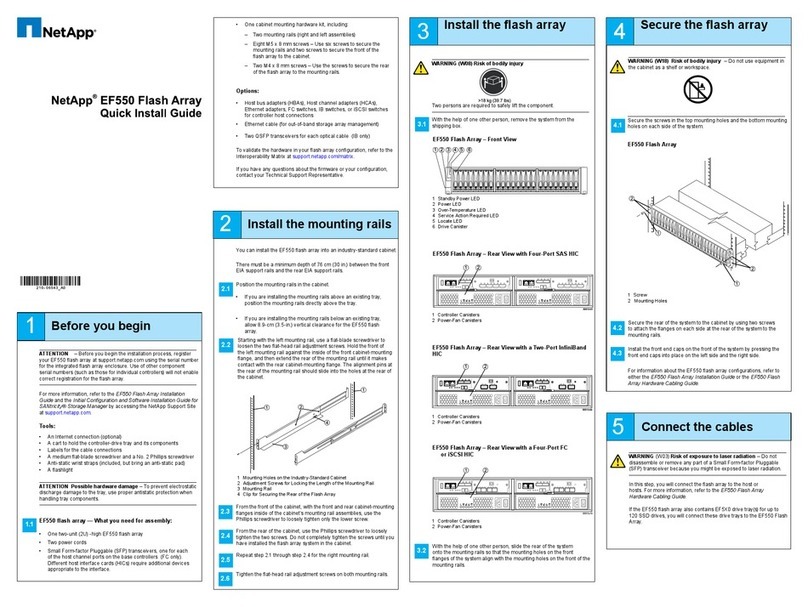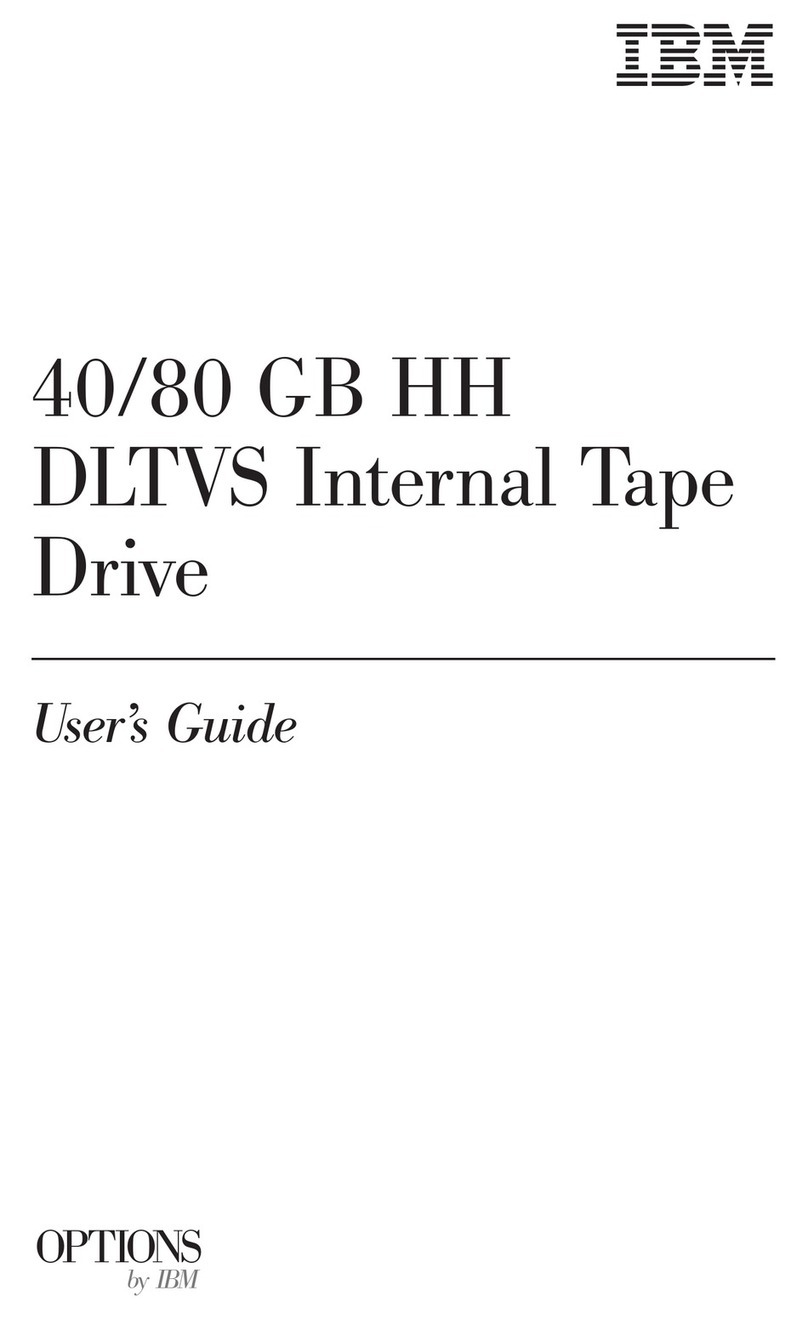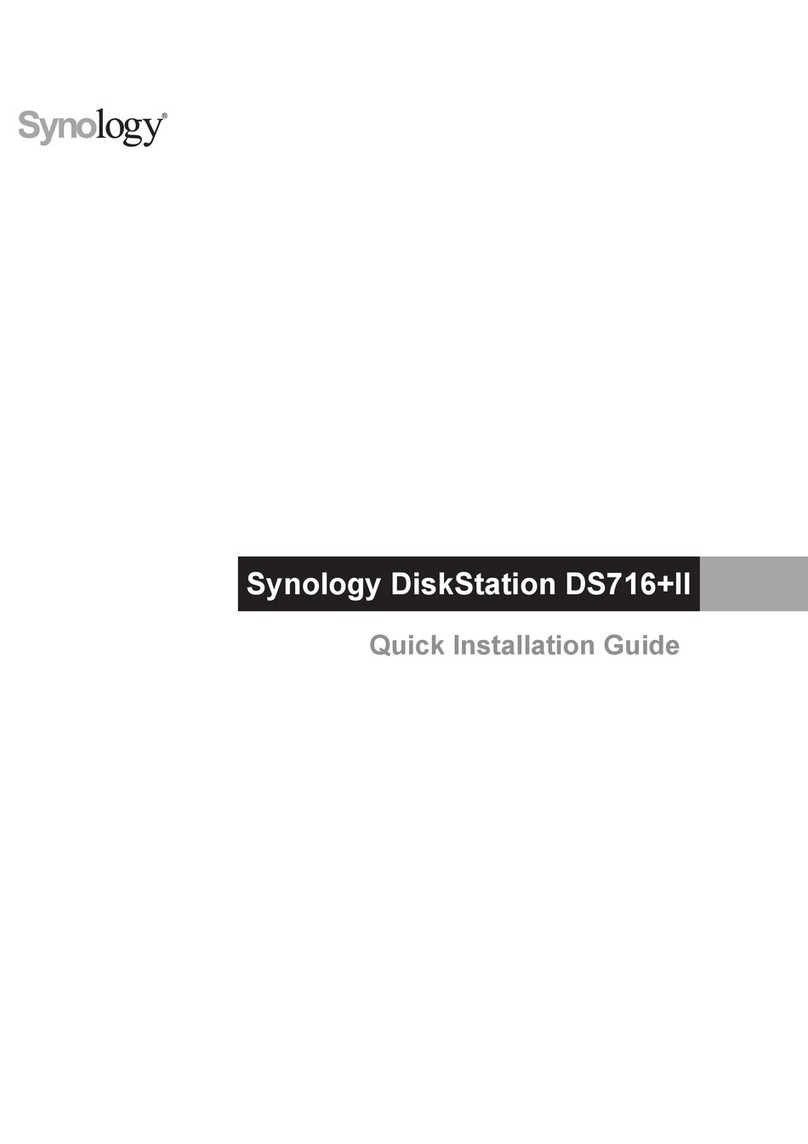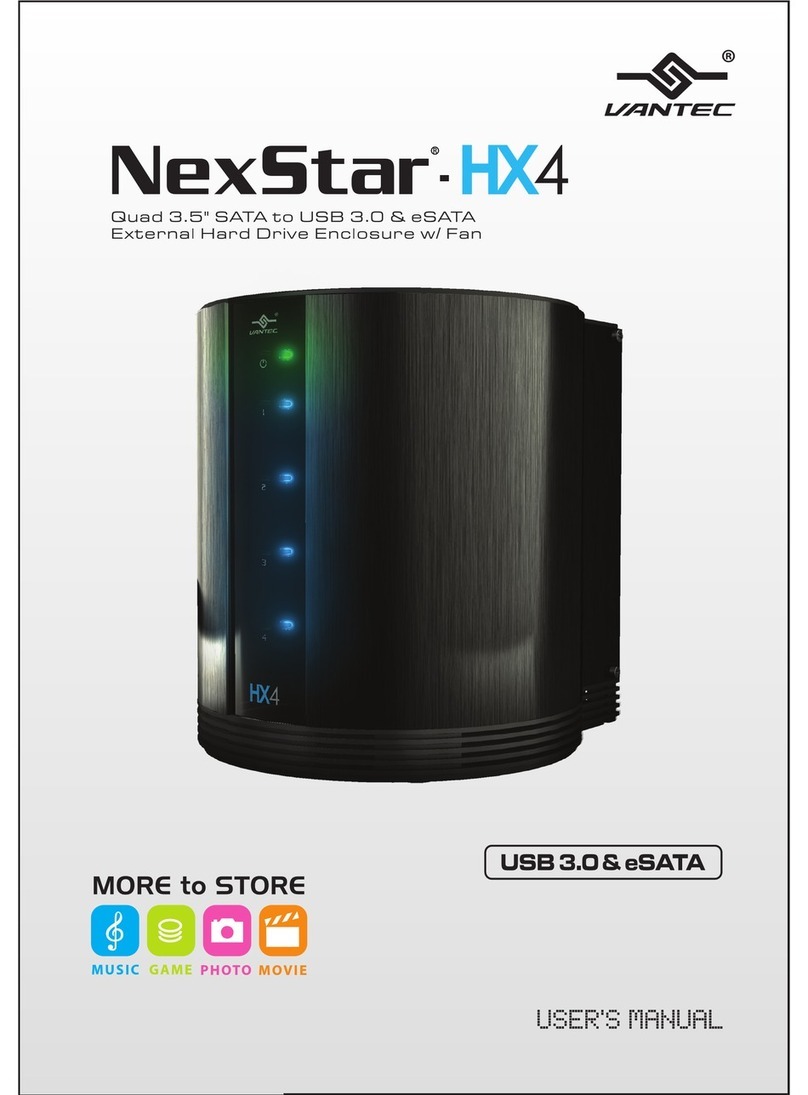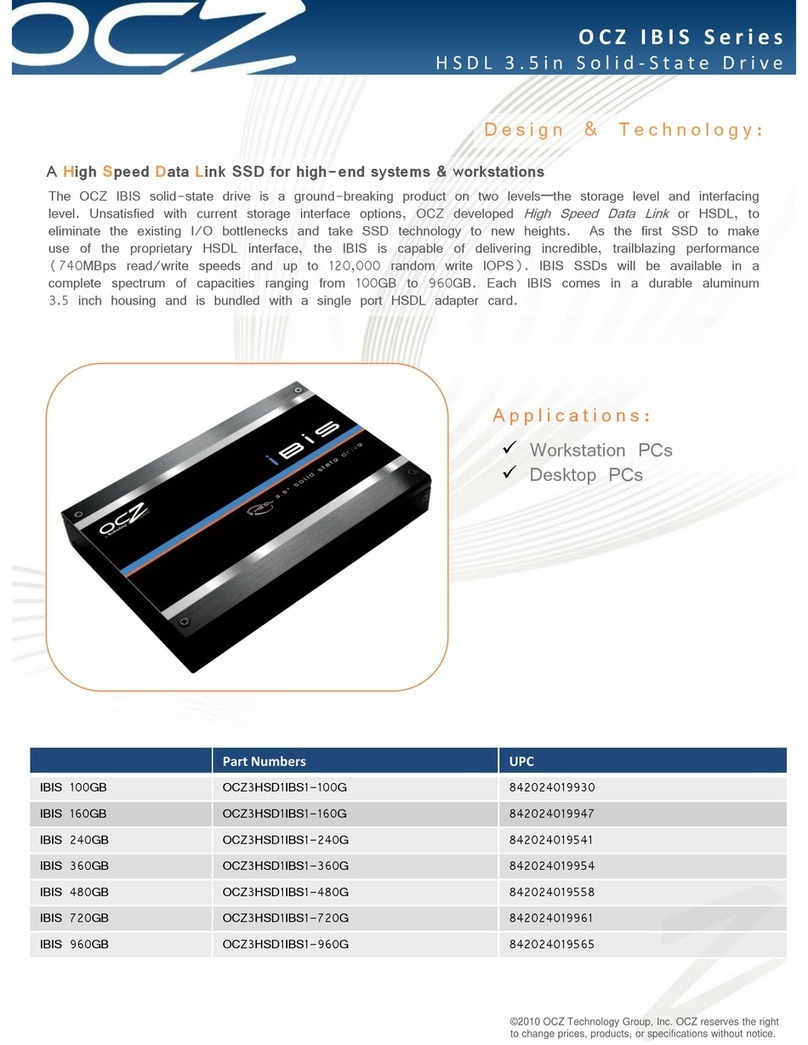10.2
10.3
6.2
6.1
6.3
6.4
You must follow the power sequence in the order shown. To establish
power redundancy for trays with two power supplies, use a separate
power source for each power-fan canister. For additional redundancy,
you may connect each DC power connector on the same power-fan
canister to a different power source.
IMPORTANT You must turn on the power to all connected drive
tray before you turn on the power to the E2600 controller-drive tray.
Performing this action makes sure that the controllers recognize each
attached drive tray.
Disconnect the two-pole 20-amp circuit breaker for the storage array.
Make sure that all of the DC power switches on the DC-powered
controller-drive tray and drive trays are turned off.
Connect the DC power connector cables to the DC power connectors
on the rear of the controller-drive tray and drive trays.
Have a qualified service person connect the other end of the DC
Power connector cables to the DC power plant equipment.
Turn on the Power switch on each power-fan canister in all of the
installed drive trays.
Turn on the Power switch on each power-fan canister in the controller-
drive tray.
NOTE When turning off the power to the storage array, perform the
procedure in the reverse order. Turn off the power first to the controller-
drive tray, and then turn off the power to the drive trays.
6.5
6.6
10 Discover the storage
array
10.5
10.4
10.1
March 2012
NetApp Inc.
495 East Java Drive
Sunnyvale, CA 94089 U.S.A.
Telephone: + (408) 822-6000
Fax: +1 (408) 822-4501
Support telephone: +1 (888) 4-NETAPP
Information Web: http://www.netapp.com
Part Number: 52889-00, Rev. A
Copyright © 2012 NetApp, Inc. All rights reserved.
E2600 Controller-Drive Tray between Two Drive Trays
for Redundancy and Tray Loss Protection
Connecting Cables for Maximum Redundancy
and Tray Loss Protection
In the AMW, select the Setup tab, and select the Rename
Storage Array link to name the storage array. You can use up
to 30 alphanumeric characters, hyphens (-), pound signs (#), and
underscores (_).
Also on the Setup tab, click the Locate Storage Array link to find
the storage array in the cabinet. A white LED blinks on the front of the
selected storage array. Physically label the storage array with its name.
Click the Storage & Copy Services tab to see the storage array’s
configuration.
If the storage array is not in the Optimal state, click the Needs
Attention link. Follow the steps in the Recovery Guru.
Select the Summary tab, and select Storage Array Profile.
By clicking the tabs, find the controller firmware, NVSRAM, ESM
firmware, drive product ID, and firmware version, and record them.
Close the storage array profile.
11 Perform a basic setup
Configure the
storage array
12
12.1
12.2
12.3
12.4
12.5
In the AMW, select the Setup tab. If the storage array is in the Optimal
state, perform these tasks:
Configure the storage array.
Define the hosts.
Create new storage partitions.
Select the Support tab, and click the Gather Support Information
link.
To set or change a password, in the AMW, select either the
Set a Storage Array Password link under the Setup tab, or select
Storage Array >> Security >> Set Password.
9.1
9.2
9.3
9Install the software
1
2
WARNING (W16) Risk of bodily injury– Each
tray has more than one power cord. To remove all
electrical current from the devices, make sure that all
of the power cords are disconnected from the power
source and that the two-pole 20-amp circuit breaker
for the storage array has been disconnected.
ExpExp
Controller A Controller B
ESM A ESM B
ESM A ESM B
SAS EXP
SAS IN SAS EXP
SAS IN SAS INSAS IN
SAS EXP
SAS IN SAS EXP
SAS IN SAS INSAS IN
Before performing this step, make sure that you have correctly
configured the storage array IP addresses as described in the Initial
Configuration and Software Installation Guide for SANtricity ES
Storage Manager.
Start the SANtricity ES Storage Manager software from your
management station either by typing SMclient and pressing Enter
(UNIX OSs), or by navigating to the directory that contains the
SMclient.exe file, typing SMclient, and pressing Enter
(Windows OSs). The client software starts and shows the Enterprise
Management Window (EMW).
Select Tools >> Automatic Discovery from the EMW to discover
the storage array.
In the configuration dialog, click OK to start the automatic discovery.
Click the Devices tab of the EMW to see the storage arrays.
Double-click the storage array that you want to manage. The
associated Array Management Window (AMW) is launched.
NOTE To add a storage array from outside the local subnetwork, use
the manual discovery method. From the EMW, click the Add Storage
Arrays link, and follow the instructions.
11.1
11.2
11.3
11.4
11.5
6Turn on the DC power
DC power is an option that is available for use with your E2600
controller-drive tray and DE5600 drive tray. If you choose to have
–48 VDC power available, you need a qualified service person to
install the equipment that provides special DC power connectors to
each power-fan canister in your storage array.
WARNING (W14) Risk of bodily injury – A qualified service person
is required to make the DC power connection according to NEC and
CEC guidelines.
Two types of computers are associated with the storage array.
• Hosts send I/O to the storage array.
• Management stations manage the storage array.
The type of operating system that the management station runs is the
directory that you need to locate on the DVD.
At this time, check the BIOS and device driver versions for your
current Fibre Channel HBA, SAS HCA, or iSCSI Network Interface
Card (NIC). If necessary, update them before proceeding. For HBAs,
obtain the BIOS and device drivers directly from the vendor.
For Microsoft Windows installations,
• Install the StorPort device driver.
• Install the MPIO multi-path driver on the host.
On the SANtricity ES Storage Manager Installation DVD, locate the
appropriate operating system (OS) directory.
• Review the appropriate operating system and device driver
read me files included on the SANtricity ES Storage Manager
Installation DVD for additional information.
Launch the SMIA executable file. Follow the instructions in the wizard,
and select one of these installation methods:
• For the Management Station designated as a monitor (for
monitoring and sending alert notifications), select Management
Station (full installation), and, when prompted, click
Automatically Start Monitor.
• For the Management Station that you will use to manage
the storage array, select Management Station, and, when
prompted, select Do Not Automatically Start the Monitor.
• For all I/O hosts attached to the storage array, select Host,
and, when prompted, select Do Not Automatically Start the
Monitor.
For more information, refer to the “Deciding on the Management
Method” step in the Initial Configuration and Software Installation
Guide for SANtricity ES Storage Manager.
For Out-of-band management, use one of the methods below to
configure the controllers for network connectivity:
Without a DHCP server
Connect separate Ethernet cables to each controller.
Manually configure the network settings on the controllers, using
the guidelines and procedures from the “Manually Configuring the
Controllers” step in the Initial Configuration and Software Installation
Guide for SANtricity ES Storage Manager.
With a DHCP server
Connect separate Ethernet cables to each controller.
Assign static IP addresses to the controllers.
NOTE This method applies only to IPv4 networks.
Stateless Address Autoconfiguration
Connect separate Ethernet cables to each controller.
NOTE This method applies only to IPv6 networks and does not
require either a DHCP server or a router.
8Determine the
management method
Both management methods are specific to the installation steps in
Section 9. This section and those that follow concern configuration of
the entire storage array.
• In-band management – Managing a storage array by using a
storage management station to send commands through the host
input/output (I/O) connection to the controller.
• Out-of-band management – Managing a storage array by using
a storage management station to send commands through the
Ethernet connections on each controller.
+
-
123
4
1 Ground, Green/Yellow Wire
2 Return (Positive), Blue Wire
3 Supply (Negative), Brown Wire, –48 VDC
4 DC Power Connector
WARNING (W12) Risk of electrical shock – This unit has more than
one power source. To remove all power from the unit, all DC MAINS
must be disconnected by removing all power connectors (see item 4
below) from the power supplies.
7Turn on the AC power
You must follow the power sequence in the order shown. To establish
power redundancy for trays with two power supplies, use at least two
different power distribution units (PDUs) in the cabinet. Split the power
connections from each tray into the separate PDUs. Then connect the
PDUs to external power receptacles that are on different circuits.
IMPORTANT You must turn on the power to all connected drive
trays before you turn on the power to the E2600 controller-drive tray.
Performing this action makes sure that the controllers recognize each
attached drive tray.
Turn off all of the Power switches from the rear of the storage array,
and make sure that all of the power cords are connected.
If the main AC circuit breaker switches in the cabinet are not already
turned on, turn on the circuit breaker switches.
WARNING (W17) Risk of bodily injury – Each tray has
more than one power cord. To remove all electrical current
from the devices, make sure that all of the power cords are
disconnected from the power source.
7.1
7.2
Turn on the Power switch on each power-fan canister in all of the
installed drive trays.
Turn on the Power switch on each power-fan canister in the
E2600 controller-drive tray.
NOTE When turning off the power to the storage array, perform the
procedure in the reverse order. Turn off the power first to the controller-
drive tray, and then turn off the power to the drive trays.
7.4
7.3
8.a1
8.a2
8.b1
8.b2
8.c1
